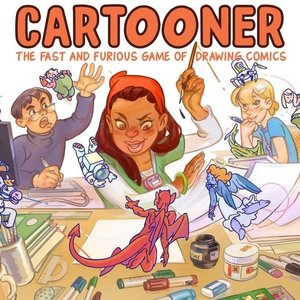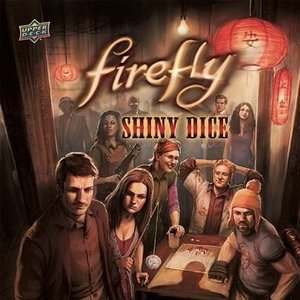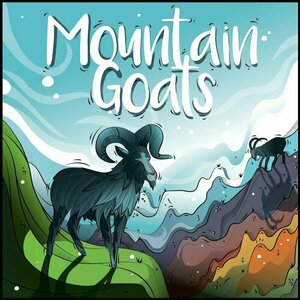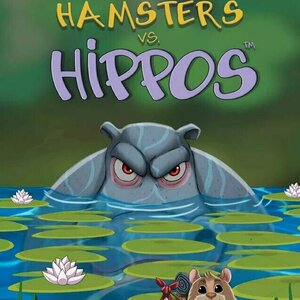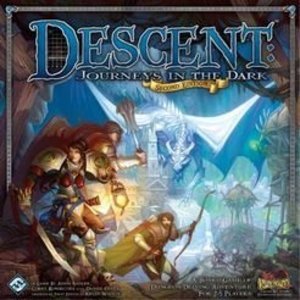
Stretching Programs - Improve your flexibility
Health & Fitness and Lifestyle
App
Relax, strengthen and relieve pain & tension! Great for home or office, this app offers stretching...

B.iCycle - GPS cycling computer for Road & Mountain Biking
Health & Fitness and Navigation
App
— NEW: APPLE WATCH APP — COOL NEW FEATURES: - An Apple Watch App: All your values at a glance...
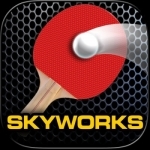
World Cup Table Tennis™
Games and Sports
App
World Cup Table Tennis. #1 franchise in 94 countries. And of course, the #1 Table Tennis game on the...
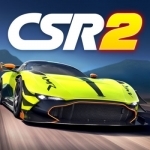
CSR Racing 2
Games and Entertainment
App
CSR Racing 2 – The next chapter to the #1 drag racing franchise of all time has arrived. ...

Sky Sports for iPad
Sports and Entertainment
App
Just like Zlatan, Sky Sports for iPad is free and has won a shedload of awards (well, at least one)....
Purple Phoenix Games (2266 KP) rated Cartooner: The Fast & Furious Game of Drawing Comics in Tabletop Games
Jul 23, 2019
A typical game of Cartooner will last four rounds and each round will be the same length – five, six, or seven minutes each. During these rounds players will create comics using increasing numbers of panels each round. So Round 1 will be a 2-panel comic, Round 2 will have 4 panels, Round 3 will have 6 panels, and the final round will contain 8 panels to fill with glorious comic gold. This is the basic game flow. Where the actual “game” part comes in is through the use of the two decks of cards.
DISCLAIMER: I do not intend to cover every single rule included in the rule book, but will describe the overall game flow and major rule set so that our readers may get a sense of how the game plays. For more in depth rules, you may purchase a copy from the publisher directly or from your FLGS. -T
Three “Theme” cards are dealt at the beginning of the game to each player, which describe the player’s obsessions. Players score points at the end of each round for including their Themes in the comic. This may sound somewhat easy, but the game comes with about 28,000 Theme cards and the combinations can be pretty wonky. For example, for my first game I was dealt Fear of Growing Old, Infidelity, and Desire to Be Famous. My 10-year old niece was dealt Aliens, Flowers, and Animals. I mean, come on! AND her dad is an art teacher (who also played with us and totally killed the art). So I thought I was beaten before we even began. The three Theme cards kept everyone pretty busy in Round 1, but it was about to get harder.
Round 2 introduces a new element to the game that refreshes every round: “Trend” cards. Whomever scored lowest in the previous round will draw Trend cards (the number of which is determined by which round you are currently playing) and choose cards to enact for the upcoming round. Trends are basically bonus cards that you can attempt to incorporate into your comic for the round to score fabulous amounts of points. These are optional, of course, but really can boost those scores for the round, so are not to be ignored.
At the end of each round players will present and read their comics to the group to be scored. Points are awarded for including your Themes, completing objectives from the Trend cards, and also for filling in every panel on your page – which I thought would be a breeze, but apparently eight panels is way too hard for me because I neglected to draw something in the final two panels. Tally up your points from all the rounds and determine the greatest comic artist at the table (it was me)!
Components. This game is a large pad of paper, 28,000 cards, and cardboard VP tokens. You must supply your own writing utensil. As you can see below, I like to live on the edge and used ballpoint pen for my artwork. The tokens are fine and the cards are of good quality. What I really want to highlight is the pad of paper that is provided. Every game each player will need four sheets of paper from the pad, one for each round. These pages are wonderfully organized and include the game rules at the bottom of each page to remind you of what will score points. This helps you to prioritize your panels to include the most VP-worthy elements and to (hopefully) tell a good story as well.
All in all this is a frantic comic drawing game that will have you pulling out your hair trying to compose a somewhat cohesive short visual story including elements that may not, and probably WILL not, fit into that narrative. It is relatively quick, as long as the presentations and arbitrations are held in check for time. We do not have many drawing games in our collections, and I am overjoyed that we now have an enjoyable representative of the genre. Purple Phoenix Games eagerly awards this one a 10/12. Go check it out and test your own illustration skills.
Purple Phoenix Games (2266 KP) rated Firefly: Shiny Dice in Tabletop Games
Jun 12, 2019
I really like Firefly. So when Travis told me he had Firefly: Shiny Dice, and was looking to get rid of it, I jumped on the chance to get my hands on something Firefly! I’d never played the game and had never even heard of it either. Having played it now, though, I can see why Travis wanted to off-load it on someone else.
In Firefly: Shiny Dice, over the course of three rounds, players are rolling dice to assemble a crew, complete missions, and defeat bad guys. All of the main characters of the show are represented by different die faces, each with a special power. Use those powers to help defeat bad guys and earn VPs on your turn each round! The player at the end of the game with the most points is the winner. Firefly: Shiny Dice is played the same way, regardless of player count – in solo play, you are still trying to amass the most points possible over three rounds.
At it’s core, Firefly: Shiny Dice is a dice-rolling game. And that’s where the simplicity ends. This game is bogged down an ambiguously confusing rulebook, complicated turn steps, and just way too much text overall. When I first got this game, I was psyched to play. I sat down, opened up the rulebook, read through it at least 3 times, and then put the game away. I was so confused by what I had read, I couldn’t even bring myself to try it at first. There is a lot of ambiguity in the rulebook that caused a lot of confusion and frustration for me. For example, the brown dice are Outlaw characters and the white dice are Passenger characters, but the rulebook and player aids use “Crew Dice” most of the time – so are they all Crew Dice, or just the Outlaws since, in the show, those are the characters who actually are the crew on Serenity? Are Passengers considered Crew? The same ambiguity goes for Mission Cards – if you draw one that you cannot complete, is it just discarded? Then what’s the point of the Mission Card? How about if you draw one and don’t want to complete it? Are you required to complete it if you can? Or can you choose to ignore it to negate the Mission Keyword? I felt like after I read the rulebook, I actually had more questions than before I started.
Regarding turn order, there is just way too much going on for me. There are 4 steps each turn, and some steps have several ‘phases.’ First you roll your dice, and then depending on what you rolled maybe you can re-roll some, and then you have to check to see if you got any bonuses/penalties after your re-roll, but then you stop and draw a Mission Card and possibly resolve it (?), and now you go and deal 1 damage to a foe but only if the current Mission says ‘Shiny,’ and then the foe dice resolve their effects, and now you can use your dice and character powers to fight the foes, and then depending on how many dice you have left/the Mission Keyword from your card this turn, you can decide to push your luck and take another turn immediately or just end your turn now. Whew. There are just way too many unnecessary steps, in my opinion. All you should need to do is to roll/re-roll your dice, resolve foe effects, and fight the foes. The Missions and die bonuses/penalties feel extraneous to me, and result in clunky gameplay.
In theory, this should be a cool game. In reality, it’s just frustrating. To me it feels like every single small idea made it into the end-game, but they were not executed well enough to justify including them. This game is way too wordy and ambiguous to make sense, and even though I keep the rulebook on hand every time I play, I feel like it doesn’t really help me at all. I think a more pared down/edited version of this game could be a hit.
As a fan of Firefly, I want to like this game. I really do. But I don’t. I think it is too complicated and far too confusing for what it is supposed to be, which is a relatively light dice-rolling game. Firefly: Shiny Dice is not on my short-list of games to play, nor is it on my long-list (is that a thing?). It’s kind of just in my collection at this point, though I don’t know if it’ll stay here for long.
https://purplephoenixgames.wordpress.com/2019/01/28/solo-chronicles-firefly-shiny-dice/
Purple Phoenix Games (2266 KP) rated Mountain Goats in Tabletop Games
Mar 14, 2021
Mountain Goats is a game in which players are racing to the top of 6 different mountains with their goats, in a bid to be the ‘king of the hill,’ if you will. To setup the game, lay out the Mountain cards into a grid, as described in the rules. Place the point tokens at the top of their corresponding Mountain cards, set the Bonus point tokens to the side, and all players place one Goat meeple at the bottom of each set of Mountain cards. The game is now ready to start.
On your turn, you will roll the 4 dice of the game. Using those results, you will create groups of dice, in which the dice total dictates which of your Goats is moved. Once you have created your groups, you will move your Goat up one space on the corresponding Mountain. (For example, if one of my dice groups is a 3 and a 2, then I will move my Goat on Mountain 5 up one space). After moving all of your affected Goats, pass the dice to the next player. Simple, right? Yep! Now here’s where it gets interesting. If you get a Goat to the top of a Mountain, you will collect a Point token from the corresponding pile. If an opponent is already at the top of a Mountain and you are able to move there, then you kick your opponent back to the bottom of that mountain, and claim the top spot for yourself, collecting a Point token as normal! AND if you create a dice set for a Mountain on which you are already at the top, you get to collect an additional Point token and keep your Goat at the top. How long can you hang onto that top spot? I guess you’ll find out. If/when you collect at least 1 Point token from each of the 6 Mountains, you get to claim the highest-value Bonus point token still available.
Play continues in this manner until either all of the Bonus point tokens have been claimed, or when 3 Mountains have no more Point tokens remaining. Players count up all of their collected points, and the player with the highest score is the winner.
The thing I like about Mountain Goats the most is that it is so fast and easy to play/teach. The concept is easy to grasp, the mechanics are simple, and the gameplay is engaging. So right off the bat, this is a solid game for me. The next thing I like is that even though it is such a small, light game, you’ve still got to have a strategy to succeed. With the Mountains numbered 5-10, you really have to think about how you want to group your dice. If your total falls below 5 or over 10, it won’t move any Goats! So if you’ve got a 6, 6, 5, and 2, how can you best maximize your movement? Are you willing to sacrifice a die because it doesn’t necessarily work with your strategy this turn? Or do you want to move as many Goats as possible every turn? It’s really up to you, and that strategic flexibility heightens the gameplay for me.
The other thing I really like about Mountain Goats is the amount of player interaction, in a sort of take-that way. When you reach the top of a Mountain, if an opponent is already there, they get kicked back to the bottom! So not only do they have to start the climb over again, but they can’t just sit pretty collecting Point tokens when possible. For me, the slight take-that element in this game is more friendly than cutthroat, and that really makes the overall gameplay experience more positive. Starting over from the bottom is, at most, only 4 cards from the top, so getting kicked down isn’t totally detrimental to the game atmosphere.
Components. They’re great! The cards are nice and sturdy, the artwork colorful and numbering clear. The Point tokens are nice thick cardboard, the dice are big and clear, and the Goat meeples are chunky and fun to manipulate. I have yet to see a game from BoardGameTables.com that has poor production quality, and Mountain Goats is no exception.
All in all, I think this is a great and fun little game. The concept is cute, the gameplay itself is fun and engaging, and the small footprint and short playtime make it an enjoyable little game. And since the gist of the game is just counting/numbers, it can be played with relatively young gamers, which makes it a good family-friendly filler game. Purple Phoenix Games gives Mountain Goats an ascending 9 / 12. Give it a shot and see if you’ve got what it takes to come out on top!
Purple Phoenix Games (2266 KP) rated Hamsters vs. Hippos in Tabletop Games
Oct 1, 2021
Hamsters vs. Hippos is a press-your-luck tile flipping game where players are cute little hamsterinos escaping the zoo and nearing freedom. However, along the way they must traverse the hippo enclosure. Typically hippos only eat grass, but in this game universe they are attracted to the delectable little rodents and are as hangry as my kids after a day at the playground. The hamster who can collect the most lotus flowers from the hippo lily pads at the end of the game will be the winner and be able to escape the zoo in peace. All other players will be snacked.
DISCLAIMER: We were provided a copy of this game for the purposes of this review. This is a retail copy of the game, so what you see in these photos is exactly what would be received in your box. I do not intend to cover every single rule included in the rulebook, but will describe the overall game flow and major rule set so that our readers may get a sense of how the game plays. For more in depth rules, you may purchase a copy online or from your FLGS. -T
To setup, determine the appropriate grid size for the number of players per the rulebook. Shuffle all the lily pad tiles face-down, place them in the grid, then place upon them nine lotus flower tokens. Each player will select their hamsteeple and mat and the game may now begin!
Hamsters vs. Hippos is played over four rounds and each turn players will have two actions they must complete. For the first action, each hamster must move onto the grid to explore a face-down tile, or explore another face-down tile if already on the grid. For the second action the hamster may continue exploring new tiles or be taken off the grid to score their collected lotus flowers. Movement can be orthogonally or diagonally, but every time they move, the hamsters must move to an unexplored tile. Flipping these tiles will reveal empty lily pads, some special actions to be taken, lotus flowers to be collected, or hippos that end the hamster’s round and makes the hamster forfeit their collected lotus flowers this round.
The game continues in this fashion over four rounds where hamsters are moving onto and off the grid, moving around the grid, collecting flowers, and possibly being eaten. At the end of the fourth round players total their lotus flowers they were able to keep and the hamster with the most lotus flowers wins!
Components. This one is easy. This game is a bunch of lily pad tiles, some cardstock player mats, wooden lotus flower tokens, and cute little hamsteeples. The tiles are good quality, the player mats are big and nice, and the hamsteeples are precious. I enjoy the lighthearted art style quite a bit – even the angry-looking hippo tiles. My only issue lies with the lotus flower tokens. They are very thin painted wooden tokens in two colors – pastel pink (worth 1 VP)and slightly darker pastel purple (worth 3 VP). I am not colorblind, but I like to make mention of items I would think are not colorblind friendly. The difference in color is not great enough, even for me of acceptable color differentiation. Another thing about these is they are very thin and delicate. Normally this isn’t an issue for me, but this is clearly a game my children want to play. When they play this with me I am always holding my breath just waiting for them to break a lotus flower. It hasn’t happened yet, but I might see about adding sturdier components to my copy when I play with little ones.
Game play is very very light. This is purely a press-your-luck game of deciding to move to a tile, flipping it over, and hoping for the best. There are a few special action tiles that can help mitigate the luck factor a little, but most of the time it’s a leap before you look scenario. That may turn off a large faction of gamers, but I will be playing this primarily with my children (who are nowhere near the suggested age of 8+). I could have reviewed this under our Kids Table series, but it doesn’t seem to be marketed specifically to children. As a game for adults, this is novelty at best, but for children it’s a decent press-your-luck style game. Purple Phoenix Games gives this one a 4 / 6, but only because it works so well with kids. If I didn’t have children I couldn’t see myself playing it a whole lot at all. Consider this when you look at the amazing cover art and intriguing theme. It’s good for what it is, but will not be for all collections and play groups.
Paul Kellett (118 KP) rated Descent: Journeys in the Dark (Second Edition) in Tabletop Games
May 4, 2019
With a couple of big-box and half a dozen small-box expansions, not to mention the various hero & monster packs, there is a ton of stuff available and if you own everything, you will be able to choose from 72 heroes with 22 different class decks; fight against 45 different monster types, and encounter around 15 lieutenants over a total of 182 different scenarios. That's plenty to keep you quiet for a while.
So many cards...
Descent: An Overview In The Dark
Descent is a scenario-based game where you work through a tree of different missions, choosing the next one based on whether the heroes or the Overlord worn the last. Each scenario will have specific objectives - anything from stealing an item and reaching the exit to interrogating prisoners and defeating a fearsome Lieutenant of the Overlord. Some of the monsters to be encountered are specified in the scenario text with other free groups able to be chosen from traits specific to that scenario. This gives some variety meaning you will never face exactly the same monsters if you replay the scenarios.
The good players choose a hero from the stack of basic skill types - Fighter, Healer, Scout or Mage and then choose from one of the many class decks for each type so the Fighter could be a Knight or a Berzerker, the Mage a Necromancer and the Healer a Bard, etc. These decks give each hero their skills and form their general strategy.
Meanwhile, the Overlord player chooses one of two Basic decks of cards that will form the base of his defence against the heroes. One deck is more about springing traps while the other has more things to enhance monster attacks. After choosing the basic deck, the Overlord can choose a specialist deck. These can be used to fine tune the Overlord's strategy and at first, only one card is available, the others will be purchased with experience points after each scenario. Finally, if the relevant expansion packs are available, the Overlord can choose a Lieutenant deck which adds further depth to his strategy and also offers the chance to bring a powerful figure into play later in the campaign.
Solo? How So? Redjak has the answer.
With all that going on, it sounds like a fairly daunting if not impossible task to play a solo game of Descent but a fan going by the name of Redjak created two card-driven AI decks - Redjak's Automated Monster Variant (RAMV) and Redjak's Automated Overlord Variant (RAOV). These decks both allow a player, or group of players to play the game as a fully co-operative experience with the cards replacing the Overlord player.
I will say that it is preferable if you have a grasp of the basic rules before jumping into these variants as there can be a lot going on if you are trying to learn the game and the solo rules at the same time. It's probably best to only choose two heroes at first as playing four heroes is more involved but ultimately more rewarding.
These variants are available to download and print out and are also available from the Printer Studio website if you search, although if you are not in the US, then shipping gets expensive.
RAMV
The Monster AI deck is the simpler of the two AI's, being just concerned with the monster actions and leaving out all the Overlord's cards. I haven't played much with this variant but the rules are fairly straightforward. You will set up 4 decks - an Event deck, a Dark Influence deck, a Conditions deck and a Monster deck.
After choosing a scenario to play, you draw cards from the Monster deck, finding ones with icons matching those of the current scenario. This keeps things random and you will always have different things to fight. The selected monster groups will then be placed in "Teams" underneath a row of team cards that will give them their activation order. Finally you will place the encounter objective card for the current scenario. This will give you specific things for each monster group to focus on in terms of stopping you from winning.
You will take your turn alternating hero and monster groups, drawing cards at various points when the monsters should react to attacks, certain scenario triggers ond other in-game events.
It is a fairly simple system but it works really well, giving a solid, straightforward dungeon crawl feel of exploring a map and fighting monsters while trying to complete your quest. Definitely a good starting point and good if you want a 'quick' dungeon crawl.
RAOV
This is the meat, the full experience. Although daunting at first, if you are familiar with the game rules (and have possibly played RAMV a bit), then it will make sense once you get stuck in.
RAOV differs over RAMV in only having one deck, but the rule book is more in depth describing how everything gets played.
You set up as normal, decide on what decks the Overlord will be playing with, draw his starting hand of cards placing them face up on the table. (This variant uses D10 dice anytime you have to make selections)
and take all your heroes actions. If at any point one of your actions would trigger an Overlord card, then that card is played and discarded. Having an open hand means that there are fewer surprises and the Overlord cant be as evil as a human player would be, but it is still tricky and knowing what cards might trigger forces you to think about your strategy in a different way.
Once the heroes have all activated, then the Overlord take its turn, playing any cards that would trigger at the start of the turn. Then, you flip over the top card of the AI deck and activate the first monster group. These cards have a primary target, shown by the corresponding hero symbol and several secondary targets. This gives the monster a focus for its actions. The main text of the card is a list of actions and essentially you work down the list doing whatever actions you are able. Each monster that activates will draw a new card and follow it's orders.
That in a nutshell is it. The Overlord's cards will trigger at the first available opportunity and the monsters will follow a list of options. Once you get used to it, it flows really well and doesn't feel too fiddly at all.
An Open Dungeon
As well as the two AI variants, Redjak also created Delven Deep - a deck of cards each displaying a different map tile that you can use to play a completely randomly generated dungeon crawl. I have yet to try this out, but it is another option if you don't fancy playing through a scripted scenario and just want to explore a random map, killing things.
For The Digital Generation
Fantasy Flight Games have also released an official, free companion app on Android, Steam and IOS that will take control of the Overlord player. This app comes with, I think 2 campaigns - a short training story and a larger, full campaign. Other campaigns a random dungeon generator are available to purchase in the app. None of the printed scenarios are playable using this app and it doesn't use any of the overlord cards, plot decks, event cards or encounter cards.
I will say that I am not a fan of apps for board games and it was actually this app in particular that soured me on the whole idea. Many people really enjoy this app and it has breathed a new lease of life into the game, but unfortunately on my first playthrough, it decided to crash near to the end of a campaign and I essentially lost 6 hours of gaming. I would have had to start all over again from the beginning. That was not a fun experience and put me off completely.
The app borrows heavily from Redjak's work, giving you a list of options to work through when activating the monsters, and various other triggers. Unlike the printed scenarios, all the maps in the digital stories are hidden until you explore them, so you never know what you will encounter. Also, there is a hidden timer in the program that means if you take too long exploring, fighting or whatever, then the game will start throwing nastier and nastier events at you. This makes the game much more of a race than its cardboard cousin and ramps up the difficulty at a fast pace making you feel like you never have enough time to do what you want.
In My opinion, RAOV is the best way to play Descent solo. It uses absolutely everything in the box and gives the most realistic feeling of playing the complete game.
